The Day the Earth Stood Still
The world on the razor’s edge
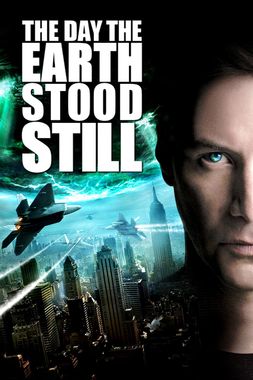
The movies where our planet is threatened with destruction are so frequent that they have practically become a subgenre of cinema. But, there are always some films that bring something new to such a visited theme. When I heard that there would be a remake of “The Day the Earth Stood Still” (USA, 1951), whose original was directed by Robert Wise, I was curious to know what would be the approach of this movie, since the first had an overtly pacifist theme.
Thanks to digital media I already had Wise’s film in my collection. With digital remastering, I could review the movie with the original quality. In fact, even the wires used in one scene are visible, something that on the cinema screen went unnoticed.
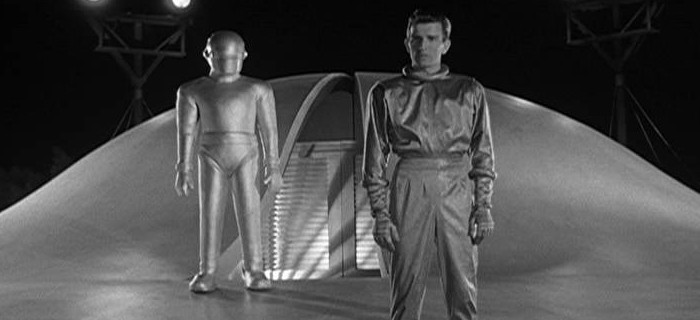
The 1951 movie begins with the arrival of a spaceship of alien origin that lands in a park in Washington, DC. Surrounded by onlookers, police and military, a man, dressed in a space suit, leaves the ship and is shot by a more nervous soldier. Gort, the robot that accompanies the man destroys the weapons and only stops when the wounded man order him.
Klaatu (Michael Rennie), the newcomer, is taken to a hospital where he surprises doctors with how quickly he recovers. An aide to the American president talks to him, but he says that the message he brought will have to be communicated to all leaders on Earth.
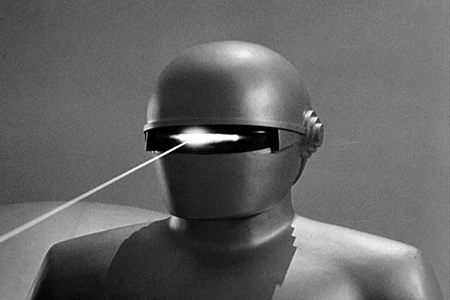
Realizing that the military wanted to keep him imprisoned, he escapes from the hospital and mixes with the men and went to live in a boarding house, where he become friend of Helen (Patricia Neal) and her son Bobby (Billy Gray). He intends to get to know men better, while looking for a way to deliver the message.
Klaatu came from a highly evolved society that had abolished violence and wars. Realizing that the Terrans had discovered atomic energy, he had come to warn them that if they used it in the wrong way, they could simply be annihilated.
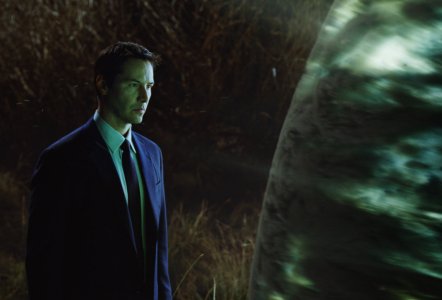
In the remake, which had the same title, the alien Klaatu is played by Keanu Reeves. This time, the ship lands in New York. The ship is immediately surrounded by the American army, and among a group of scientists that is called it is the astrobiologist Helen (Jennifer Connelly).
Almost immediately, someone shoots Klaatu, in the old American philosophy of shoot first and ask questions later. The visitor is taken to a government research center, where it is discovered that his body is exactly the same as that of a human being. Quickly recovering, Klaatu is introduced to Secretary of State Regina Jackson (Kathy Bates), who does not like the newcomer at all, as he maintains a silent stance.
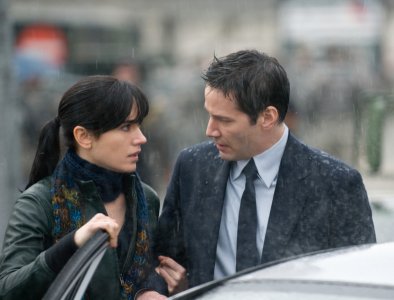
The visitor’s mission is soon revealed. The aliens follow mankind evolution and are concerned to see that the Earth, one of the few planets capable of supporting multiple life is being destroyed by man. The solution? Destroy mankind, in order to save the planet, other species and the environment.
The robot that accompanied Klaatu, despite being trapped in a military stronghold, begins the process of destruction. The way he does it is interesting, as it transforms itself into a huge cloud of tiny insects that simply destroy everything they touch.

In the meantime, Helen struggles to convince Klaatu that Humanity deserves a chance, as it has always done throughout its history, whenever it faced a serious crisis. To give this chance, however, Klaatu must reach his ship before the destructive cloud reaches it.
As I said at the beginning of the review, the same story had different approaches, each aligned with the problems of its time. In Wise’s 1951 movie, the world was experiencing the frightening beginning of the Cold War. Only six years had elapsed since the explosion of the atomic bombings of Hiroshima and Nagasaki, and in 1949 was the time of Russia show that also could do it. The UN, still in its infancy, was more of a concept than an active body. Nobody really knew what nuclear power was capable of, except killing a lot of people.
In the 2008 film, the world’s nuclear situation is perhaps even worse than in 1951, when only two countries had atomic weapons. Today they are in the hands of several countries such as the United Kingdom, France, India, Pakistan and are still dispersed among what remains of the former Soviet Union. On the other hand, the damage that we cause to the environment with oil spills, fires, deforestation, pesticides, etc., is perhaps a much more serious and immediate danger than a possible atomic war.
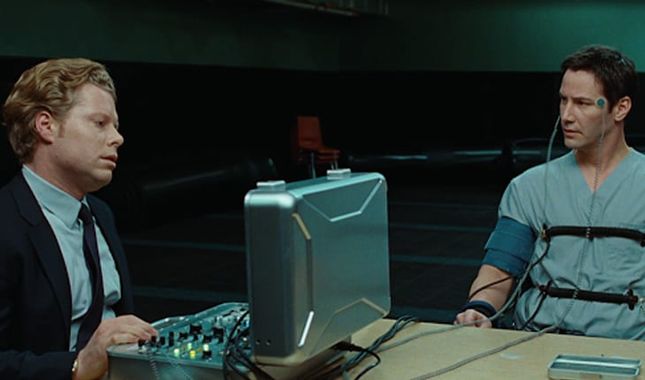
As cinema, both films are attractive, although the original version is in black and white, standard screen format and with special effects almost funny, because they are very crude. On the other hand, 2008 movie, with an estimated cost of $ 80 million, features highly technical special effects, although the apocalyptic destruction scenes get more realistic and shocking with each film.
However, both films are interesting to watch and discuss if the threats presented there are real. In the end, we have no need for any aliens to come here to destroy us. Who is most likely to do that beyond ourselves?





